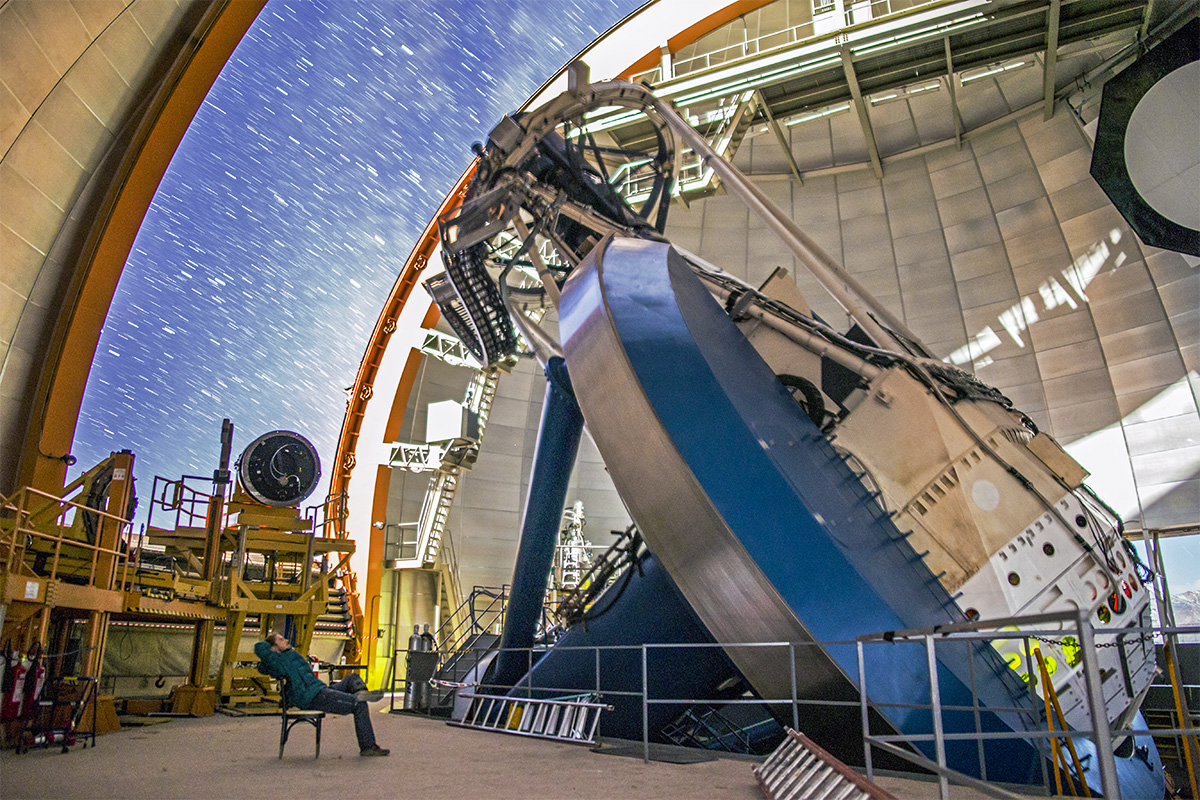
Blanco at night Credit: Alex Tudorica
The Dark Energy Camera (DECam) is mounted on the Victor M. Blancoalso known as the Blanco 4m, telescope at the Cerro Tololo Inter-American Observatory (CTIO) in north central Chile. Telescope construction started in 1969 with the casting of the primary mirror. The assembly at the Cerro Tololo mountaintop was finished in 1974. Upon completion of construction it was the 3rd largest telescope in the world, behind the 200” Hale telescope at Palomar Observatory in California and the BTA-6 in southern Russia, and the largest in the Southern Hemisphere (a title that it held for 22 years). Later named in 1995 in honor of Victor Blanco, Puerto Rican astronomer and former director of CTIO,
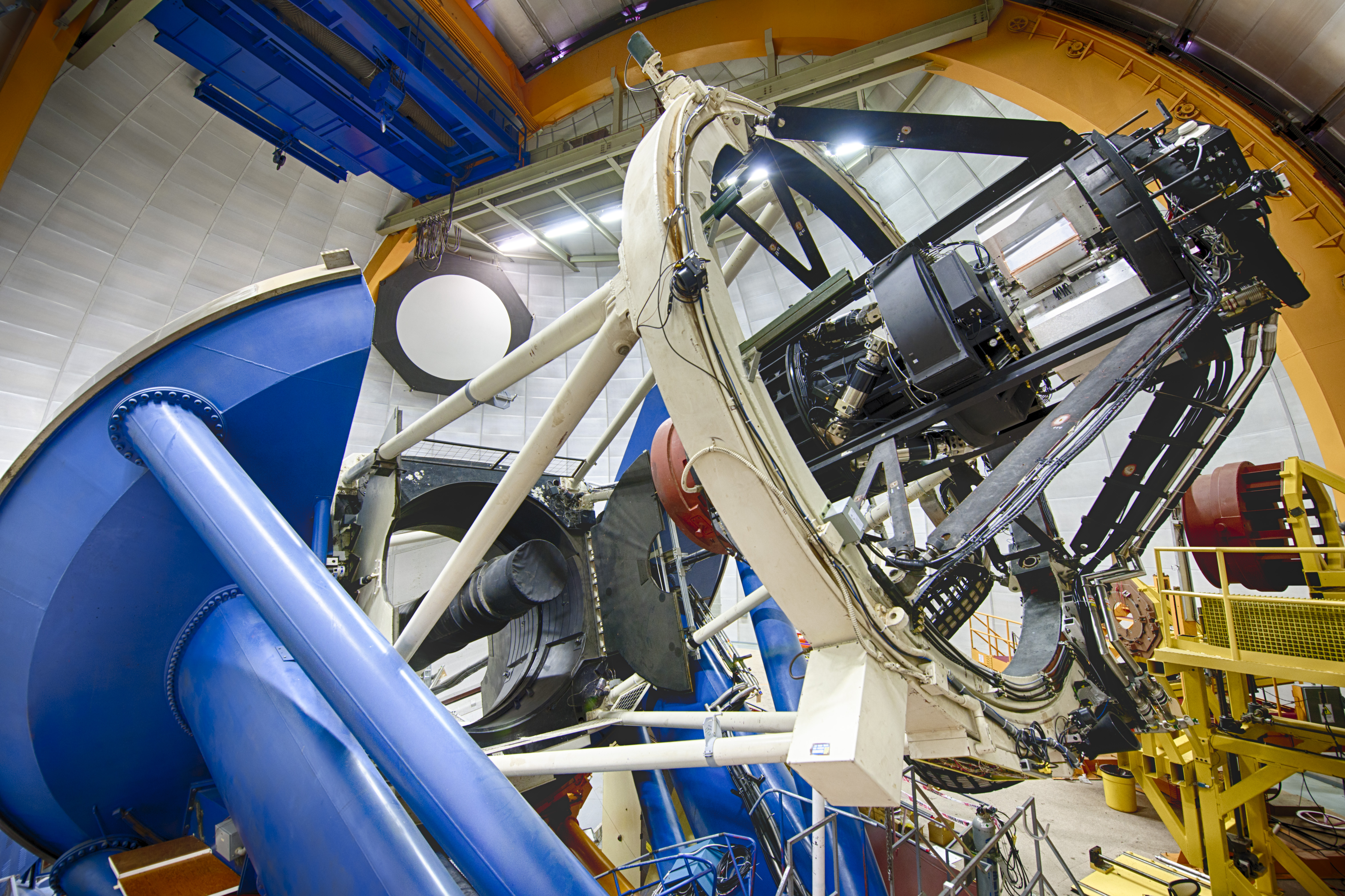
DEcam in Blanco 4m. Credit: Reidar Hahn
The Blanco telescope has a 4-meter (13 feet) diameter mirror, which weighs 34,000 lbs. It was designed in the 1960’s to have a 158” (4 m) diameter aluminum-coated primary mirror that weighs 34,000 lbs. The Dark Energy Camera (black paint) is mounted at the prime (first) focus near the top of the Serrurier truss (white paint). The camera is pointing out of the now-retracted dome slit. The blue-painted structure is the large bearing that allows the telescope to move in Right Ascension (RA). The center of a plane parallel to the RA bearing points to the sky’s South Pole. The telescope Declination (DEC) axis is located at the level of the middle of the RA bearing and is best seen on the left side of the large u-shaped notch. The primary mirror is located a few feet lower than the DEC axis. You can easily see one of the two mirror covers flipped up to the right near that location. All of this is supported from below by a stout steel frame (not shown).
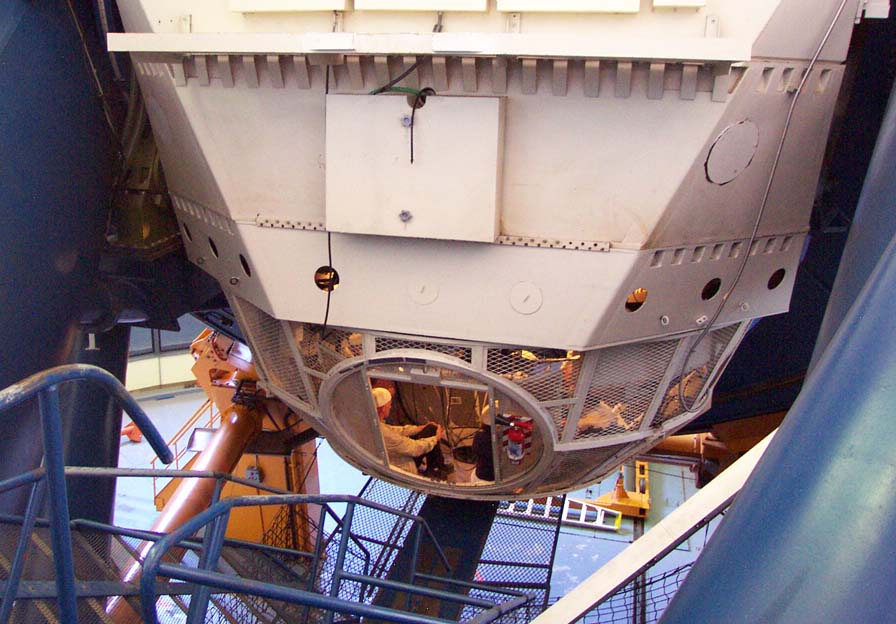
Cassegrain cage
The telescope’s design eventually became outmoded, but this made it optimal for the heavy DECam. It was commissioned in 1974 at a time when manual operations were required and observers rode inside the Cassegrain cage beneath the mirror. At that time, astronomical images were recorded on large photographic “plates”, which were inserted by hand into position by an observer who actually sat behind the instrument at the top of the telescope, where the light is first focused ( the “prime focus”) after hitting the mirrors at the bottom of the telescope. He or she would ride around in a “cage” all night long, needing to open and close the shutter of the instrument and “tweak” the telescope position so that it followed the sky as the Earth rotated. It could be cold and lonely up there.
With the invention of the modern digital cameras, photographic plates were phased-out, albeit initially by small field-of-view detectors. The telescope is probably most famous for its use in the discovery of “Dark Energy” in 1998 by two teams of scientists who studied supernovae in distant galaxies. The 2011 Nobel Prize in physics was awarded to Saul Perlmutter, Adam Riess , and Brian Schmidt for this discovery.
Starting in the 1980’s, and astronomers no longer needed to be in the cage all night. However, Blanco’s initial design to carry a heavy load at the top later made it an ideal choice of telescope to house the DECam. The sturdy telescope structure can support the mass of DECam and the wide field design of the mirror provides one of the few existing platforms for efficient wide field surveys.
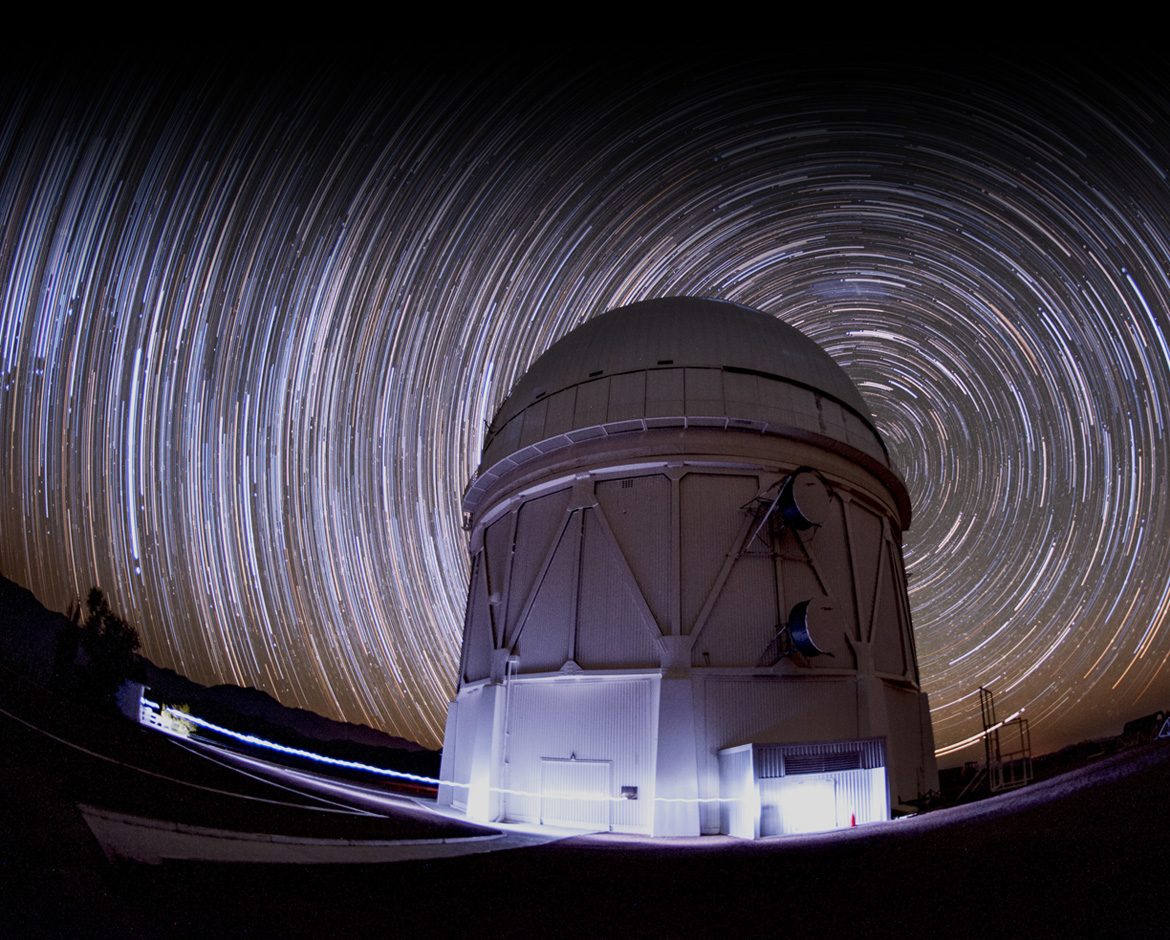
The Victor M. Blanco 4-meter telescope building.
The double door on the ground level on the left side of the photo provides a scale. The base of the telescope is located about 15’ below the base of the dome, which is covered with aluminum sheets. A slit, located to the right of the dome in this picture, can be retracted backwards, out of the way of the view of the telescope. The dome rotates depending on which way the telescope is aimed. Photo credit: H. T. Diehl.
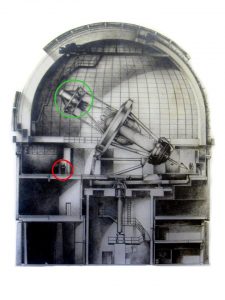
The 4 meter Blanco telescope. The green circle marks the location of the prime focus cage where DECam will be mounted. Credit: CTIO/AURA/NSF
The Blanco telescope and dome are shown to the left. To give a sense of the immense scale of the telescope, compare its size to the human highlighted by the red circle. The green circle indicates the prime focus cage where the DES imaging device, DECam, will be installed. The Blanco is ideally suited to receive this new device because it was originally built to hold a heavy load at this top end. When it was built, people rode in the prime focus cage and took astronomical pictures using heavy glass photographic plates. Now, DECam will be taking pictures of roughly the same size with electronic CCD’s.
In 2003 the NOAO issued an Announcement of Opportunity that requested proposals for the development of a major new instrument for this historic telescope. The new instrument had to take advantage of the telescope’s wide field-of-view at prime focus. Some scientists formed a team, called the Dark Energy Survey Collaboration, which responded by proposing to design and build a new 520 megapixel camera called the Dark Energy Camera. Installed in 2012, the Dark Energy Camera is now a facility instrument, making it available to both the Dark Energy Survey and community observers throughout the year.
In addition to its use for the Dark Energy Survey, DECam will be a facility instrument on the Blanco telescope. This means it will be available for general use by the astronomical community, providing an order of magnitude increase in reach over its predecessor, MOSAIC II. The telescope is operated by the Association of Universities for Research in Astronomy (AURA) and funded by the U.S. National Science Foundation (NSF) through the National Observational Astronomy organization (NOAO).